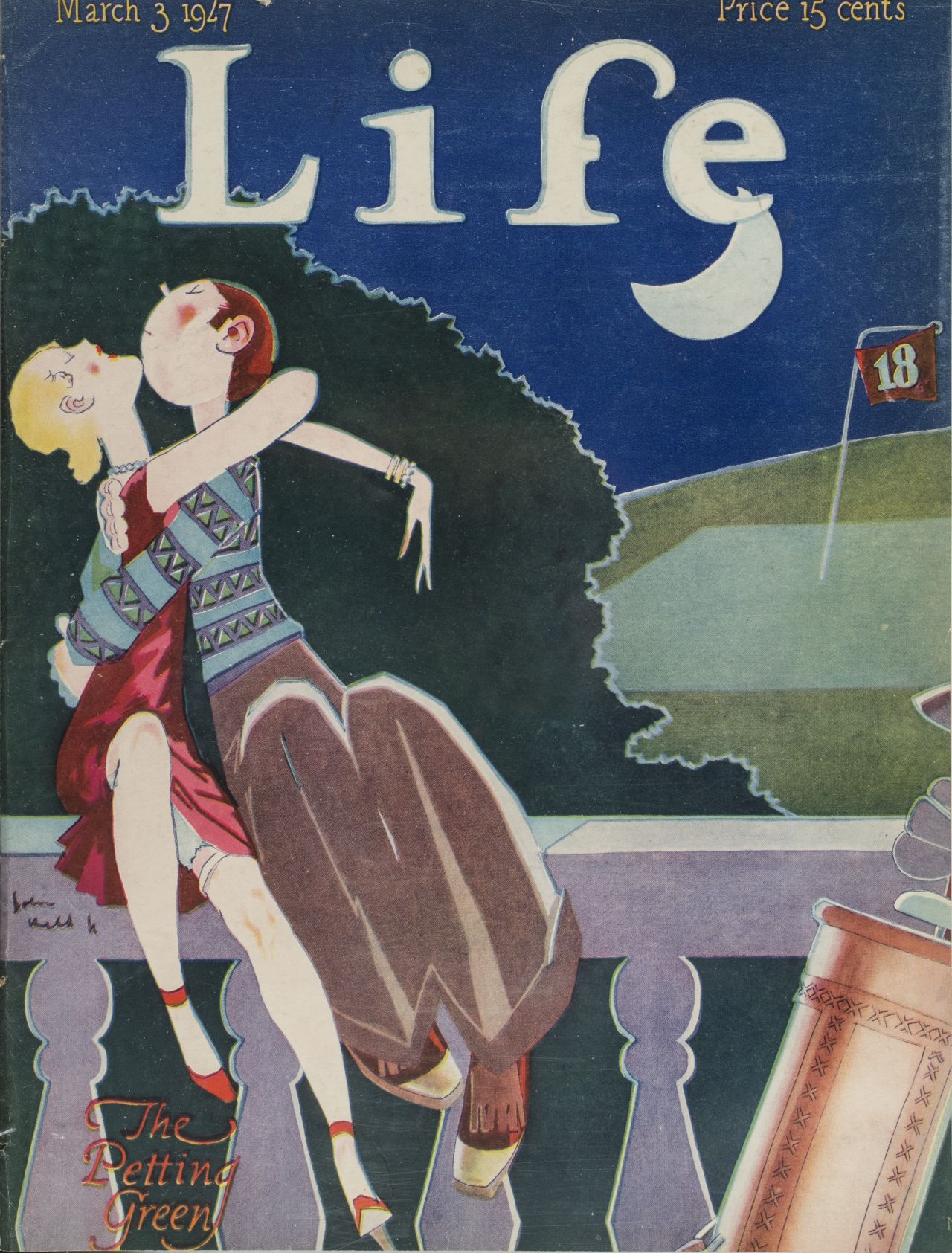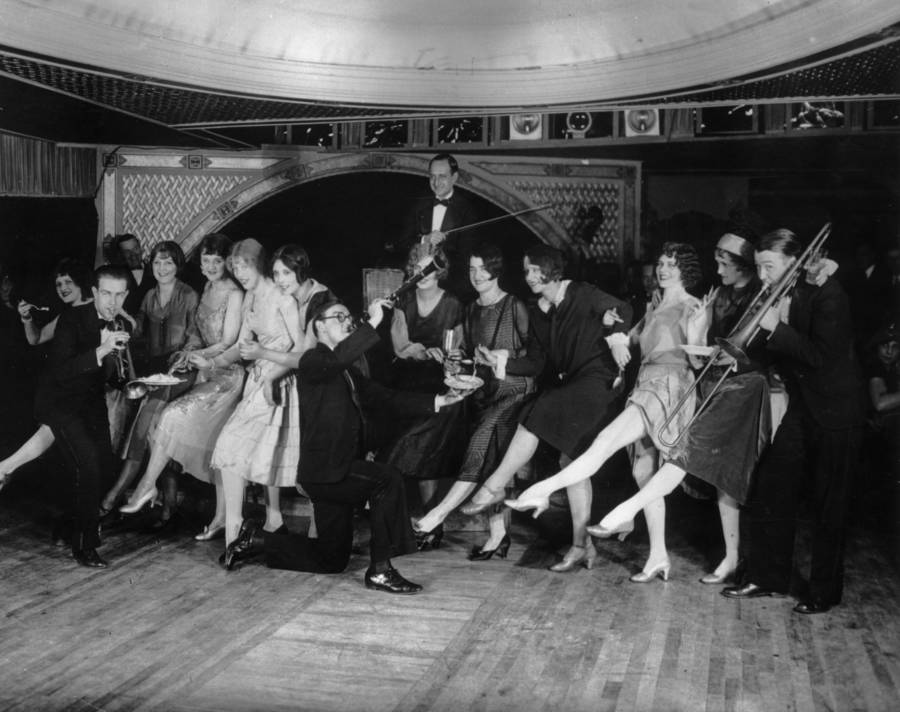 "John Held, Jr., "The Petting Green", Life magazine, March 3, 1927. New-York Historical Society Library. Accessed April 16 2025"
"John Held, Jr., "The Petting Green", Life magazine, March 3, 1927. New-York Historical Society Library. Accessed April 16 2025"
After the passing of the 19th Amendment which granted women the right to vote, flappers of the Roaring Twenties helped redefine what it meant to be a woman in America. Rejecting traditional gender roles that valued modesty, obedience, and dependence on men, they embraced bold short haircuts, stylish fashion, and behavior that defied societal expectations as forms of self-expression.
Their appearance played a key role in expressing their freedom. They wore bold makeup, often with dramatic dark eyes and bright red lips, which was a contrast to the subtle and natural makeup that women typically wore before. This makeup choice contradicted the expectation that women should maintain modesty in their appearance. The bobbed hairstyle was a radical statement, as long hair was traditionally seen as a symbol of femininity. Short hair symbolized a break from oppressive norms, allowing women to reject traditional ideals and embrace their freedom. Additionally, flappers wore dresses that had elements like sleeveless, dropped waists, loose fits, or embellishments with sequins and fringes, rejecting the corsets and figure-enhancing styles they were used to. Together, these visual choices symbolized a transition from the past, emphasizing their desire for self expression and to create their own identity.
Flappers challenged not only fashion but also social norms. They went to public spaces like jazz clubs, smoked in public, drank alcohol during Prohibition, and openly pursued romantic freedom. Popular dances such as the Charleston and the Shimmy reflected their joy, expression, and liberation during a time of social change. Their behavior was viewed as reckless, inappropriate, and even dangerous by many men and the patriarchal society, who feared these bold women would disrupt the traditional gender roles and the social order.
Despite the backlash, flappers became symbols of rebellion, individuality, and liberation, reshaping societal views toward women and allowing future generations to confidently claim their identities and gain autonomy. Their legacy continues to inspire women today, shaping the freedoms we have now in self-expression and societal acceptance.
 Flappers dancing while musicians perform a Charleston dance on Life magazine, March 3, 1927. New-York Historical Library. Accessed April 16 2025
Flappers dancing while musicians perform a Charleston dance on Life magazine, March 3, 1927. New-York Historical Library. Accessed April 16 2025
Flappers in 1920s America were more than just a trend, they symbolized a cultural shift in the way women viewed themselves and how society perceived them. With their sense in fashion and makeup, bobbed haircuts, and bold behavior, flappers defied the traditional ideals of femininity that emphasized modesty, obedience, and restraint. They redefined womanhood by embracing freedom in how they dressed, spoke, and moved through the world, making statements about independence and self-expression. Beyond just changing appearances, flappers opened conversations around gender roles, individuality, and the right of women to live life on their own way. Their impact helped lay the foundation for future social movements and inspired generations of women to challenge expectations and embrace their power.
 Hal Bevan Petman of a flapper enjoying a drink and a cigarette, featured on the cover of the British magazine The Bystander, September 21, 1927. Accessed April 17
Hal Bevan Petman of a flapper enjoying a drink and a cigarette, featured on the cover of the British magazine The Bystander, September 21, 1927. Accessed April 17